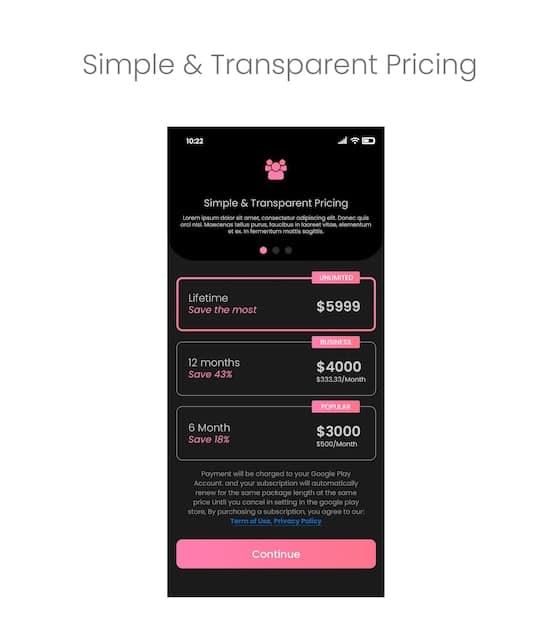AI-Powered Price Tracking: US Market Future

AI-powered price comparison tools are poised to revolutionize the US market, offering consumers unprecedented insights and control over their purchasing decisions by leveraging advanced algorithms for real-time price tracking and personalized recommendations.
The future of retail is rapidly evolving, and at the forefront of this transformation are AI-powered price comparison tools coming to the US market. These innovative technologies promise to reshape how consumers shop and businesses compete, offering unprecedented transparency and efficiency.
The Rise of AI in Price Comparison
Artificial intelligence is rapidly transforming various aspects of our lives, and the retail sector is no exception. AI’s capability to process vast amounts of data and identify patterns makes it exceptionally well-suited for price comparison applications. This is paving the way for more sophisticated, user-friendly tools that go beyond simple price listing.
Understanding AI-Driven Price Analysis
AI algorithms can analyze pricing trends, forecast future price changes, and even personalize recommendations based on individual consumer behavior. This provides a level of insight that traditional price comparison tools simply can’t match.
The Impact on Consumer Behavior
As AI-powered tools become more prevalent, consumers are likely to become more price-sensitive and savvier in their purchasing decisions. This increased transparency will incentivize businesses to offer more competitive prices and better value for their products and services.
- Enhanced Price Transparency: AI provides real-time, comprehensive price comparisons across multiple platforms.
- Personalized Recommendations: Tailored shopping suggestions based on past behavior and preferences.
- Improved Decision-Making: Consumers can make more informed choices with access to predictive price analysis.
In summary, AI’s integration into price comparison is poised to create a more efficient and consumer-centric retail environment. By providing advanced analytics and personalized insights, these tools are empowering consumers to make smarter purchasing decisions.
Key Features of Next-Gen Price Tracking Tools
The next generation of price tracking tools is expected to offer a slew of advanced features, further enhancing the shopping experience. These features will not only make price comparison more efficient but also provide consumers with a more holistic view of the value they are receiving.

Real-Time Price Monitoring
One of the most significant advancements is real-time price monitoring. These tools can continuously track price changes across various retailers, alerting consumers to the best deals as soon as they become available.
Predictive Pricing Algorithms
Predictive pricing algorithms use historical data and market trends to forecast future price fluctuations. This allows consumers to anticipate price drops and make purchases at the optimal time.
Integration with Smart Home Devices
The integration of price tracking tools with smart home devices is another exciting development. Imagine your smart refrigerator automatically comparing grocery prices and suggesting the most cost-effective options based on your dietary preferences.
- Cross-Platform Integration: Seamlessly compare prices across online and offline retailers.
- Price Drop Alerts: Instant notifications when prices fall below a specified threshold.
- Detailed Product Analysis: Comprehensive information including reviews, ratings, and specifications.
In conclusion, the incorporation of these cutting-edge features will transform price tracking tools from simple comparison engines into comprehensive shopping companions. This will enable consumers to make more informed decisions, save money, and optimize their shopping experiences.
Benefits for Consumers: More Than Just Savings
The primary benefit of AI-powered price comparison tools is, of course, the potential for significant savings. However, the advantages extend far beyond just finding the lowest price. These tools offer numerous benefits that can enhance the overall shopping experience and empower consumers.
Access to a Wider Range of Products
AI-powered tools can aggregate product listings from a vast array of retailers, including smaller, niche stores that might not appear in traditional search results. This expanded access allows consumers to discover unique products and support independent businesses.
Personalized Shopping Experiences
By analyzing shopping habits and preferences, AI can curate personalized recommendations. This not only saves time but also introduces consumers to products they might not have otherwise considered.
Enhanced Decision-Making
With access to detailed product information, reviews, and price history, consumers can make more informed decisions. This reduces the risk of buyer’s remorse and increases satisfaction with their purchases.

The integration of AI into price comparison isn’t just about finding the cheapest option; it’s about empowering consumers with information and control. This leads to smarter purchasing decisions and a more satisfying shopping experience.
Challenges and Considerations
While the future of AI-powered price comparison tools looks promising, several challenges and considerations need to be addressed. These include issues related to data privacy, algorithm bias, and the potential for market manipulation.
Data Privacy Concerns
AI algorithms require access to vast amounts of data to function effectively. This raises concerns about how consumer data is collected, stored, and used. Ensuring data privacy and security is crucial for building trust and encouraging adoption.
Algorithm Bias
AI algorithms are only as good as the data they are trained on. If the data is biased, the algorithm may perpetuate and even amplify those biases. Addressing algorithm bias is essential for ensuring fair and equitable outcomes for all consumers.
Potential for Market Manipulation
Sophisticated retailers could potentially manipulate AI algorithms to their advantage, for example, by artificially inflating prices or suppressing competition. Robust regulatory oversight is needed to prevent such practices.
Despite these challenges, the potential benefits of AI-powered price comparison tools are undeniable. By addressing these concerns proactively, we can ensure that these technologies are used responsibly and ethically, maximizing their positive impact on consumers and the retail industry.
The US Market: A Fertile Ground for Adoption
The US market presents a particularly fertile ground for the adoption of AI-powered price comparison tools. Several factors contribute to this favorable environment, including the high level of internet penetration, the prevalence of online shopping, and the growing demand for personalized experiences.
High Internet Penetration and E-Commerce Adoption
The US has a high rate of internet penetration, and a significant portion of the population regularly shops online. This provides a large and receptive audience for AI-powered price comparison tools.
Demand for Personalized Experiences
US consumers are increasingly seeking personalized shopping experiences. AI-powered tools can cater to this demand by providing tailored recommendations and customized pricing alerts.
Competitive Retail Landscape
The US retail landscape is highly competitive, with numerous players vying for market share. This creates a strong incentive for businesses to adopt AI-powered tools to gain a competitive edge and attract price-conscious consumers.
The US market is well-positioned to embrace AI-powered price comparison tools. The combination of high internet usage, demand for personalized experiences, and a competitive retail environment makes it an ideal testing ground for these innovative technologies.
Future Trends and Predictions
Looking ahead, several trends are likely to shape the future of AI-powered price comparison tools. These include the integration of augmented reality, the rise of voice-based shopping, and the increasing focus on sustainable and ethical consumption.
Augmented Reality Integration
Augmented reality (AR) can enhance the shopping experience by allowing consumers to visualize products in their own homes before making a purchase. Integrating AR with price comparison tools would provide an even more immersive and informative shopping experience.
Voice-Based Shopping
Voice-based shopping is becoming increasingly popular, thanks to the proliferation of smart speakers and voice assistants. AI-powered price comparison tools can be integrated with these platforms to provide hands-free shopping assistance.
Focus on Sustainable and Ethical Consumption
Consumers are becoming more aware of the environmental and social impact of their purchases. AI-powered tools can help them make more sustainable and ethical choices by providing information on product origins, manufacturing processes, and environmental certifications.
The future of AI-powered price comparison tools is bright. As technology continues to evolve and consumer preferences shift, these tools will become even more sophisticated and indispensable for savvy shoppers.
| Key Point | Brief Description |
|---|---|
| 💡AI Integration | AI enhances price tracking with real-time analysis and personalized recommendations. |
| 💰Consumer Benefits | Consumers gain access to wider product ranges and enhanced decision-making. |
| 🔒Challenges | Data privacy, algorithm bias, and market manipulation are key concerns. |
| 🌎US Market | US market is fertile due to high internet penetration and e-commerce adoption. |
Frequently Asked Questions
▼
AI-powered tools use algorithms to analyze prices from various retailers in real-time, providing users with the best available deals. These tools adapt to market changes, offering dynamic pricing insights that are continuously updated.
▼
Yes, as long as you use reputable tools with strong data protection measures. Always review the privacy policies and security features before using any price comparison tool to ensure they protect your personal information.
▼
While not always perfectly accurate, AI algorithms can forecast potential price drops by analyzing historical data, market trends, and seasonal patterns. This helps consumers make informed purchasing decisions.
▼
Businesses can use AI-powered tools to monitor competitors’ pricing strategies, optimize their own pricing, and identify market trends. This helps them stay competitive and maximize profitability in a dynamic market.
▼
Future trends include augmented reality integration for virtual shopping, voice-based shopping via smart devices, and a greater focus on sustainable and ethical consumption, providing more informed choices for consumers.
Conclusion
In conclusion, the advent of AI-powered price comparison tools coming to the US market signals a transformative shift in the retail landscape. By addressing the inherent challenges responsibly and leveraging the technology’s potential, both consumers and businesses can benefit from a more informed, efficient, and personalized shopping experience.





